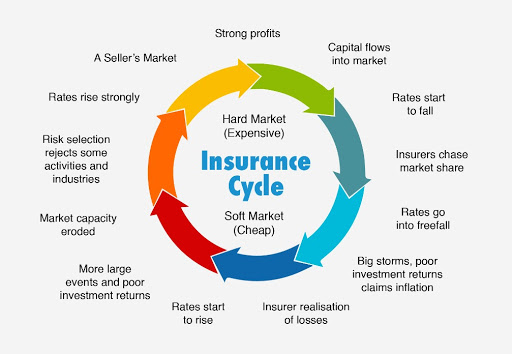
Renewed opportunity for hospitality and leisure businesses to launch another bid to claim Covid-19 Business Interruption Insurance losses
March 24th, 2022 Posted by Forty Four Media Uncategorised 0 comments on “Renewed opportunity for hospitality and leisure businesses to launch another bid to claim Covid-19 Business Interruption Insurance losses”The hospitality and leisure sectors were without a doubt the worst hit by Covid-19, with hotels, bars, restaurants and health clubs severely affected by the swathe of government restrictions and regulations imposed since March 2020.
Business owners were forced to navigate a plethora of changing Covid-19 rules and regulations, mandating when and where businesses were allowed to open, how services were to be provided and what measures were required to be put in place to protect the safety and wellbeing of staff and customers, whilst also seeking to remain financially viable.
This turbulent period forced many businesses to close their doors for good and countless more just about managed to stay afloat. Due to the importance of Business Interruption Insurance, it is unsurprising that many hospitality and leisure businesses continue to press their insurers for claim pay-outs, even where, upon first reading, the outcome of the FCA Test Case on Business Interruption losses does not appear to indicate there was cover.
The FCA Test Case was intended to provide answers, en-masse, to insurance coverage questions affecting thousands of businesses. Whilst the High Court and Supreme Court judgments went a long way to resolve the coverage debates, quarrels with insurers continue in relation to areas not directly covered by the Test Case, or where the outcome left uncertainties. Notably, Corbin & King, the owner of 9 upscale London restaurants including The Wolseley and the Delauney, recently issued High Court proceedings against AXA for a declaratory judgment that cover is available in respect of each of its premises up to the £250,000 limit of indemnity (a total value of £4.4m).
The question posed to the court was whether a sum insured of £250,000 applied just once to the entirety of the Corbin & King empire or applied to each entity covered by the policy? The court decided in favour of Corbin & King that each restaurant is covered for £250,000.
On 25th February 2022, The Honourable Mrs Justice Cockerill DBE held that Corbin & King Ltd and its subsidiaries were successful in their claim against AXA for Business Interruption losses suffered as a result of Covid-19.
The case considered two important matters of principle:
the scope of the Non-Damage Denial of Access ‘NDDA’ cover, following the causation analysis of the Supreme Court in the FCA test case and quantum.
- Insurers argued there could only be cover under this clause if policyholders could demonstrate that it was an emergency by reason of Covid-19 in the vicinity, of the insured premises, as opposed to the country as a whole, which led to the actions or advice of the government.
The judge concluded that the Supreme Court’s approach to causation should be adopted and that Covid-19 is capable of being a danger within one mile of the insured premises which, coupled with other uninsured but not excluded dangers outside, led to the regulations which caused the closure of the businesses and caused the Business Interruption loss.
- The judge also held that the ‘NDDA’ cover provided a separate limit of £250,000 for each individual premises in respect of each claim (rather than a single limit of £250,000 in relation to all of the premises for any one claim).
This judgment is a very important step for Policyholders in their efforts to recover the losses they have suffered, and continue to suffer, as a result of Covid-19. Policyholders with ‘NDDA’ wordings who have been previously been told by their insurers that there is no cover, should be aware, therefore, that the doors to claiming Business Interruption losses are not yet firmly shut.
Those in the hospitality and leisure sectors have been particularly hard hit, and this decision will be significant for many of them.
As far as Hamilton Leigh’s clients are concerned, only a small number of claims are potentially impacted and we are currently reviewing those claims on a case-by-case basis. It should also be noted that the judgement may yet be appealed. On 23rd March 2022, the high Court granted Axa leave to appeal the judgement, although it is unclear at this stage as to whether this will be pursued.
Regardless of the outcome, it should be noted that each policy and specific loss circumstances will be different, so each claim will be dealt with on its own merits.
A copy of the judgment can be found here.
One principal matter that remains ongoing is insurers’ treatment of “Furlough” payments, in the adjustment of Covid-19 Business Interruption claims (where coverage is established). While insurers largely agreed that government grants are to be ignored for the purposes of a Business Interruption indemnity, they have generally maintained that any support received in the form of Coronavirus Job Retention Scheme payments (Furlough), and Business Rates Relief, should either be accounted for as turnover or as a saving, thus reducing the value of the covered claim under the Policy.
Insurers are being challenged as a matter of common law, that such payments do not go to reduce the policyholders’ covered loss, and as a matter of public policy, government financial support provided to the hospitality and leisure industry and other hard-hit sectors was not introduced for the benefit of insurers.
The underlying question therefore remains: who should stand first in line to benefit from the government’s financial support measures – the hospitality and leisure industries which are still struggling to recover 2 years later, or insurers, who were largely cushioned from the effects of the pandemic?
The issue remains untested in the English courts, although a distinguished panel led by Lord Mance in the Hiscox Action Group Arbitration was reported in July 2021 to have found in favour of the policyholders on this issue.
We expect this subject to come under close scrutiny by the Commercial Court, when the issue falls for determination for the first time in the English courts in the forthcoming trial of Stonegate v MS Amlin in June 2022 and if successful, will be welcome news for many businesses that had ‘NDDA’ policy cover and who’s claim settlements were reduced by ‘furlough’ payments.
Hamilton Leigh will continue to monitor the outcome of these judgements and keep our clients abreast of all developments. Should you wish to discuss your potential Covid-19 Business Interruption claim in the meantime, please contact Jamie Foster (Head of Claims):
e: jamiefoster@hamiltonleigh.com
t: 020 8236 5368








